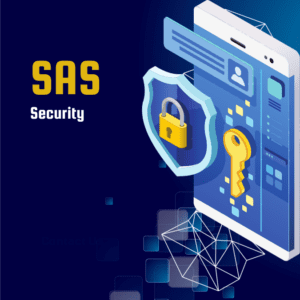The majority of individuals use cheap security procedures. As SAS apps are hosted in the cloud and reuse passwords or save them to their servers, this leaves them open to account takeover. Most company programs and data were housed on internal servers until a few years ago. Although this placed all of the responsibility for security on the operation, at least it was apparent what needed to be guarded and how to achieve it. In this blog, we will discuss how SAS helps in data security for the technology service provider.
Why is SAS security crucial for technology service providers?
As subscription-based cloud services hold sensitive data and may be accessed by a broad user base, SAS Security is essential to preserving user privacy and corporate data.
Now the question arises: does your company need SAS security? Of course, your company should be concerned about more than simply internal account IDs. SAS in data security helps the technology service provider in safeguarding staff accounts from hackers. It also helps in safeguarding the identities and other private data of your clients.
Why do technology service providers need SAS for data security?
The technology service provider requires complete SAS Security intended to thwart today’s most prevalent system risks, from zero-day assaults to phishing scams, to shield their systems from such attacks.
In recent years, cyber-attacks have become more sophisticated, developing more swiftly to elude security measures. SAS-based platforms, however, offer the benefit of being able to evolve just as quickly, making them advantageous for both applications and security.
SaaS revenues are expected to account for around one-third of all corporate software sales by the end of this decade, growing at a forecasted rate of 20% per year. The market segments shown in the accompanying graphic are those where SaaS adoption is at its highest level.
SaaS may save operational costs, speed up innovation, and cut down on spending on outmoded technology, but it is regrettably not the proverbial golden goose. Well, not quite, at least. The issue is that most powerful technology service providers haven’t given “security” enough priority in their offerings.
What are the main problems with SAS applications’ data security?
There are several different data security issues that technology service providers and their customers must deal with. The first of them is that each SAS provider is a distinct organization with its own structure, goals, and clientele. For all stakeholders participating in the process, this makes the task of plugging any security flaws a substantial challenge.
SAS functionality and commercial innovation have hitherto trumped security, but these practices are increasingly being pushed onto SAS organisations. Other data security risks to watch out for include the following:
● Visibility of cloud usage is limited
When a SAS organization is unable to assess the strength of its cloud service utilization and capabilities, serious hacks may happen.
● Hijacking an account
One of the most frequent types of cyber breach, which is typically referred to as a Ransom ware attack is the hijacking of a cloud computing account. Once a cybercriminal has acquired access to a target network, they are in a position to demand money from a business. Data loss and intellectual property harm may occur if this is not done.
● Security configuration error
Incorrect configuration of a computer application component might make it vulnerable to cyber-attack. These errors might be caused by human mistakes or can be brought about externally by hackers infiltrating the system through legitimate channels and corrupting crucial components to allow unauthorized access.
● Cloud security architecture deficit
A business that has a weak cloud security architecture exposes itself to serious harm from cyber threat actors. A bottom-up security architecture that can be linked with their cloud services provider is a must for all SAS Organisations.
● Faulty logging and monitoring
The Security Operations Center (SOC) of a SAS firm uses Security Incident and Event Management (SIEM) to perform logging and monitoring on a regular basis. Increased vulnerability to cyber-attacks will arise from these two focus locations’ weaknesses. SAS applications have been moving to the Cloud more and more.
How does SAS help the technology service provider in data security?
Whether you’re releasing a new feature, it’s essential to take your SAS security into account. Look at the points below to understand how SAS helps in data security:
● Helps in securing your data
Your technological stack’s primary priority should be encryption at all layers. In the case of a breach, effective encryption from SAS makes sure that consumer data isn’t quickly made public.
● Give precedence to privacy
Most compliance and regulatory processes need privacy and security declarations; however, that isn’t their only use. SAS helps in teaching your team and your customers how to manage important data by developing a strong statement for your own product.
● It backs up user data in many places
Effective client data management is crucial since many firms aren’t prepared for data breaches. SAS helps by creating several copies of your data. By this way, you can be assured that not a single system failure will compromise your security.
● Uses stronger and more complex passwords
Many people still use the same password for each login, even if they are aware of the risks involved. SAS helps by requesting strong passwords from users when they establish accounts. It helps in stopping them from exposing your data to risk.
Security will be increasing more as the subscription economy grows. Thus, according to the advice from the experts of Venus Global Technology, as your technology service provider business expands, always reevaluate your present procedures to ensure that the SAS is actually helping your business in data security.



